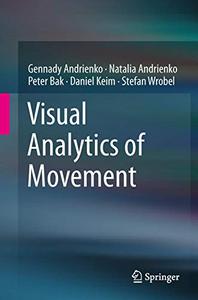
Visual Analytics of Movement by Gennady Andrienko
English | PDF | 2013 | 394 Pages | ISBN : 3642375820 | 82.3 MB
Many important planning decisions in society and business depend on proper knowledge and a correct understanding of movement, be it in transportation, logistics, biology, or the life sciences. Today the widespread use of mobile phones and technologies like GPS and RFID provides an immense amount of data on location and movement. What is needed are new methods of visualization and algorithmic data analysis that are tightly integrated and complement each other to allow end-users and analysts to extract useful knowledge from these extremely large data volumes.
Many important planning decisions in society and business depend on proper knowledge and a correct understanding of movement, be it in transportation, logistics, biology, or the life sciences. Today the widespread use of mobile phones and technologies like GPS and RFID provides an immense amount of data on location and movement. What is needed are new methods of visualization and algorithmic data analysis that are tightly integrated and complement each other to allow end-users and analysts to extract useful knowledge from these extremely large data volumes.
This is exactly the topic of this book. As the authors show, modern visual analytics techniques are ready to tackle the enormous challenges brought about by movement data, and the technology and software needed to exploit them are available today.
The authors start by illustrating the different kinds of data available to describe movement, from individual trajectories of single objects to multiple trajectories of many objects, and then proceed to detail a conceptual framework, which provides the basis for a fundamental understanding of movement data. With this basis, they move on to more practical and technical aspects, focusing on how to transform movement data to make it more useful, and on the infrastructure necessary for performing visual analytics in practice. In so doing they demonstrate that visual analytics of movement data can yield exciting insights into the behavior of moving persons and objects, but can also lead to an understanding of the events that transpire when things move. Throughout the book, they use sample applications from various domains and illustrate the examples with graphical depictions of both the interactive displays and the analysis results.
In summary, readers will benefit from this detailed description of the state of the art in visual analytics in various ways. Researchers will appreciate the scientific precision involved, software technologists will find essential information on algorithms and systems, and practitioners will profit from readily accessible examples with detailed illustrations for practical purposes.
Links are Interchangeable - No Password - Single Extraction



